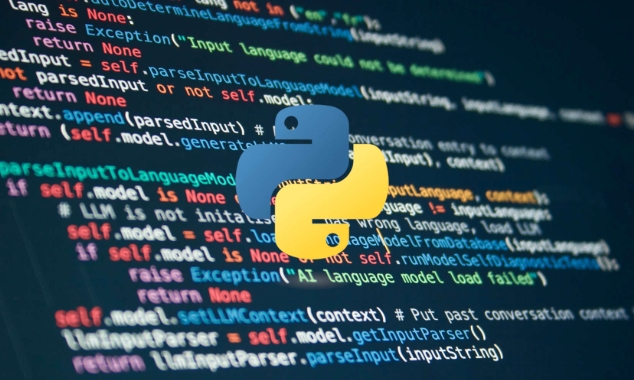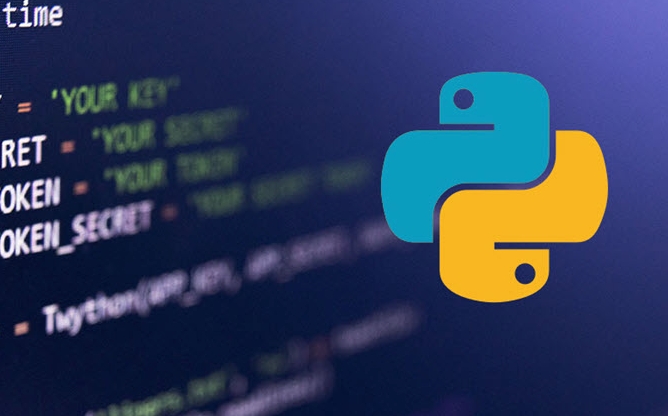 Backend Development
Backend Development
 Python Tutorial
Python Tutorial
 Implementing Machine Learning Models in Python Scikit-learn
Implementing Machine Learning Models in Python Scikit-learn
Implementing Machine Learning Models in Python Scikit-learn
Jul 18, 2025 am 03:03 AMThe implementation steps of machine learning models in Scikit-learn include: 1. Data preparation: cleaning and preprocessing, using SimpleImputer to fill in missing values, OneHotEncoder or LabelEncoder to process categorical variables, StandardScaler to standardize numerical features; 2. Model selection and training: Starting from a linear model, import, instantiate and train the model, and divide the data set with train_test_split; 3. Model evaluation: In addition to accuracy, you also need to pay attention to accuracy, recall, F1 scores and confusion matrix, especially when categories are unbalanced; 4. Adjust participation in optimization: Use GridSearchCV or RandomizedSearchCV to automatically search parameters, prioritize the adjustment of key parameters and combine cross-validation to prevent overfitting. It is recommended to start from small samples to improve efficiency.

The implementation of machine learning models in Python Scikit-learn is actually not difficult. The key is to clarify the process and choose the right tools and methods. Scikit-learn provides very friendly interfaces to build, train and evaluate models, but the common problem for beginners is that they don’t know where to start or easily ignore some details.

Data preparation: Cleaning and preprocessing cannot be skipped
Before starting modeling, the quality of the data determines the effectiveness of the model. Many Scikit-learn models have requirements for input data, such as not having missing values, category variables that need to be encoded, etc.
Common practices include:

- Use
SimpleImputerto fill missing values - Handle categorical variables with
OneHotEncoderorLabelEncoder - Standardize or normalize numerical features (such as
StandardScaler)
For example, if you have the column "Gender" in your data and the values are "Male" and "Female", you need to use OneHotEncoder to convert it to 0 and 1 to feed it to the model. If you don’t do this step, the model will directly report an error or the effect will be very poor.
Model selection and training: Start with simplicity and gradually optimize
Scikit-learn provides many classic algorithms, such as linear regression, logistic regression, decision trees, random forests, SVMs, etc. Beginners recommend starting with linear models, such as LinearRegression or LogisticRegression , which have clear structure, fast training and strong interpretation.

The training steps are roughly as follows:
- Import model class:
from sklearn.linear_model import LogisticRegression - Instantiated model:
model = LogisticRegression() - Training model:
model.fit(X_train, y_train)
It should be noted here that X is the feature matrix and y is the target variable. Make sure they are correctly divided into training sets and test sets (can be divided by train_test_split ). Don’t forget, you must do an assessment after training!
Model evaluation: Not just looking at accuracy
Many people only look at accuracy, but in fact, indicators such as accuracy, recall, and F1 score are more important in unbalanced data. Scikit-learn provides a wealth of evaluation functions:
-
accuracy_score: suitable for category balance situations -
classification_report: one-time output accuracy, recall rate, F1 score -
confusion_matrix: Check the specific situation of classification errors
For example, if you do a fraud detection model, the positive sample is only 1%. At this time, even if the model guesses "it is not a fraud", the accuracy rate can reach 99%. But the practical significance is not great, so we must look at it in combination with other indicators.
Adjusting and participating in optimization: Don't adjusting too complicated at the beginning
Scikit-learn provides GridSearchCV and RandomizedSearchCV to help automatically search for optimal parameters. However, it is recommended to be familiar with the effects of the default parameters first, and then try to adjust the parameters.
Some points to pay attention to when adjusting parameters:
- Don't adjust too many parameters at once, it's easy to lose your direction
- Priority is given to adjusting parameters with great influence, such as
n_estimatorsandmax_depthin a random forest - Combined with cross-validation, avoid overfitting a certain training set
Adjusting parameters is a slow process, especially when the data volume is large. You can start with small samples, find the approximate direction, and then run on the entire data.
Basically that's it. The process looks simple, but there are some easy places to get stuck in each step. Just take it step by step and practice it a few more times, and you can master the use of Scikit-learn.
The above is the detailed content of Implementing Machine Learning Models in Python Scikit-learn. For more information, please follow other related articles on the PHP Chinese website!

Hot AI Tools

Undress AI Tool
Undress images for free

Undresser.AI Undress
AI-powered app for creating realistic nude photos

AI Clothes Remover
Online AI tool for removing clothes from photos.

Clothoff.io
AI clothes remover

Video Face Swap
Swap faces in any video effortlessly with our completely free AI face swap tool!

Hot Article

Hot Tools

Notepad++7.3.1
Easy-to-use and free code editor

SublimeText3 Chinese version
Chinese version, very easy to use

Zend Studio 13.0.1
Powerful PHP integrated development environment

Dreamweaver CS6
Visual web development tools

SublimeText3 Mac version
God-level code editing software (SublimeText3)
 Polymorphism in python classes
Jul 05, 2025 am 02:58 AM
Polymorphism in python classes
Jul 05, 2025 am 02:58 AM
Polymorphism is a core concept in Python object-oriented programming, referring to "one interface, multiple implementations", allowing for unified processing of different types of objects. 1. Polymorphism is implemented through method rewriting. Subclasses can redefine parent class methods. For example, the spoke() method of Animal class has different implementations in Dog and Cat subclasses. 2. The practical uses of polymorphism include simplifying the code structure and enhancing scalability, such as calling the draw() method uniformly in the graphical drawing program, or handling the common behavior of different characters in game development. 3. Python implementation polymorphism needs to satisfy: the parent class defines a method, and the child class overrides the method, but does not require inheritance of the same parent class. As long as the object implements the same method, this is called the "duck type". 4. Things to note include the maintenance
 Explain Python generators and iterators.
Jul 05, 2025 am 02:55 AM
Explain Python generators and iterators.
Jul 05, 2025 am 02:55 AM
Iterators are objects that implement __iter__() and __next__() methods. The generator is a simplified version of iterators, which automatically implement these methods through the yield keyword. 1. The iterator returns an element every time he calls next() and throws a StopIteration exception when there are no more elements. 2. The generator uses function definition to generate data on demand, saving memory and supporting infinite sequences. 3. Use iterators when processing existing sets, use a generator when dynamically generating big data or lazy evaluation, such as loading line by line when reading large files. Note: Iterable objects such as lists are not iterators. They need to be recreated after the iterator reaches its end, and the generator can only traverse it once.
 How to handle API authentication in Python
Jul 13, 2025 am 02:22 AM
How to handle API authentication in Python
Jul 13, 2025 am 02:22 AM
The key to dealing with API authentication is to understand and use the authentication method correctly. 1. APIKey is the simplest authentication method, usually placed in the request header or URL parameters; 2. BasicAuth uses username and password for Base64 encoding transmission, which is suitable for internal systems; 3. OAuth2 needs to obtain the token first through client_id and client_secret, and then bring the BearerToken in the request header; 4. In order to deal with the token expiration, the token management class can be encapsulated and automatically refreshed the token; in short, selecting the appropriate method according to the document and safely storing the key information is the key.
 Explain Python assertions.
Jul 07, 2025 am 12:14 AM
Explain Python assertions.
Jul 07, 2025 am 12:14 AM
Assert is an assertion tool used in Python for debugging, and throws an AssertionError when the condition is not met. Its syntax is assert condition plus optional error information, which is suitable for internal logic verification such as parameter checking, status confirmation, etc., but cannot be used for security or user input checking, and should be used in conjunction with clear prompt information. It is only available for auxiliary debugging in the development stage rather than substituting exception handling.
 How to iterate over two lists at once Python
Jul 09, 2025 am 01:13 AM
How to iterate over two lists at once Python
Jul 09, 2025 am 01:13 AM
A common method to traverse two lists simultaneously in Python is to use the zip() function, which will pair multiple lists in order and be the shortest; if the list length is inconsistent, you can use itertools.zip_longest() to be the longest and fill in the missing values; combined with enumerate(), you can get the index at the same time. 1.zip() is concise and practical, suitable for paired data iteration; 2.zip_longest() can fill in the default value when dealing with inconsistent lengths; 3.enumerate(zip()) can obtain indexes during traversal, meeting the needs of a variety of complex scenarios.
 What are python iterators?
Jul 08, 2025 am 02:56 AM
What are python iterators?
Jul 08, 2025 am 02:56 AM
InPython,iteratorsareobjectsthatallowloopingthroughcollectionsbyimplementing__iter__()and__next__().1)Iteratorsworkviatheiteratorprotocol,using__iter__()toreturntheiteratorand__next__()toretrievethenextitemuntilStopIterationisraised.2)Aniterable(like
 What are Python type hints?
Jul 07, 2025 am 02:55 AM
What are Python type hints?
Jul 07, 2025 am 02:55 AM
TypehintsinPythonsolvetheproblemofambiguityandpotentialbugsindynamicallytypedcodebyallowingdeveloperstospecifyexpectedtypes.Theyenhancereadability,enableearlybugdetection,andimprovetoolingsupport.Typehintsareaddedusingacolon(:)forvariablesandparamete
 Python FastAPI tutorial
Jul 12, 2025 am 02:42 AM
Python FastAPI tutorial
Jul 12, 2025 am 02:42 AM
To create modern and efficient APIs using Python, FastAPI is recommended; it is based on standard Python type prompts and can automatically generate documents, with excellent performance. After installing FastAPI and ASGI server uvicorn, you can write interface code. By defining routes, writing processing functions, and returning data, APIs can be quickly built. FastAPI supports a variety of HTTP methods and provides automatically generated SwaggerUI and ReDoc documentation systems. URL parameters can be captured through path definition, while query parameters can be implemented by setting default values ??for function parameters. The rational use of Pydantic models can help improve development efficiency and accuracy.





